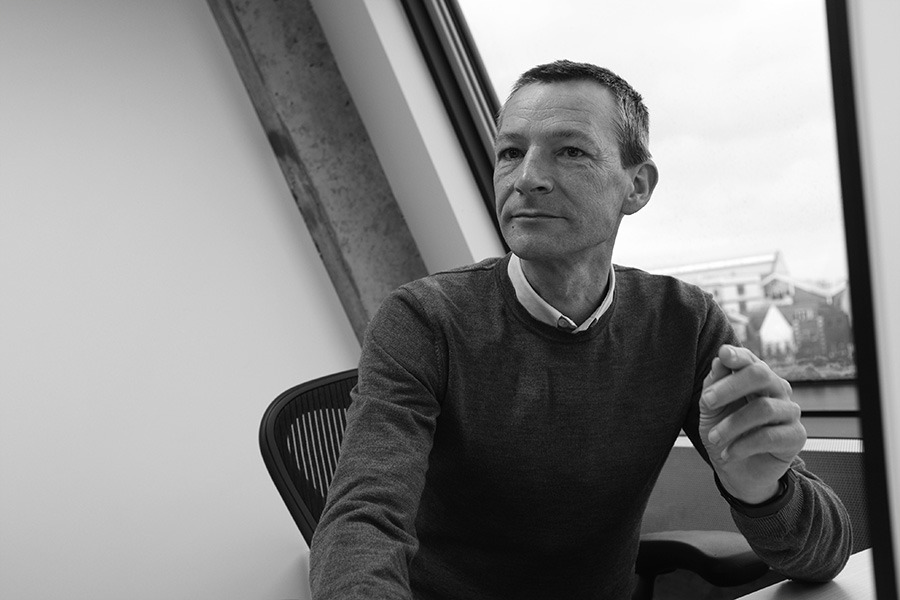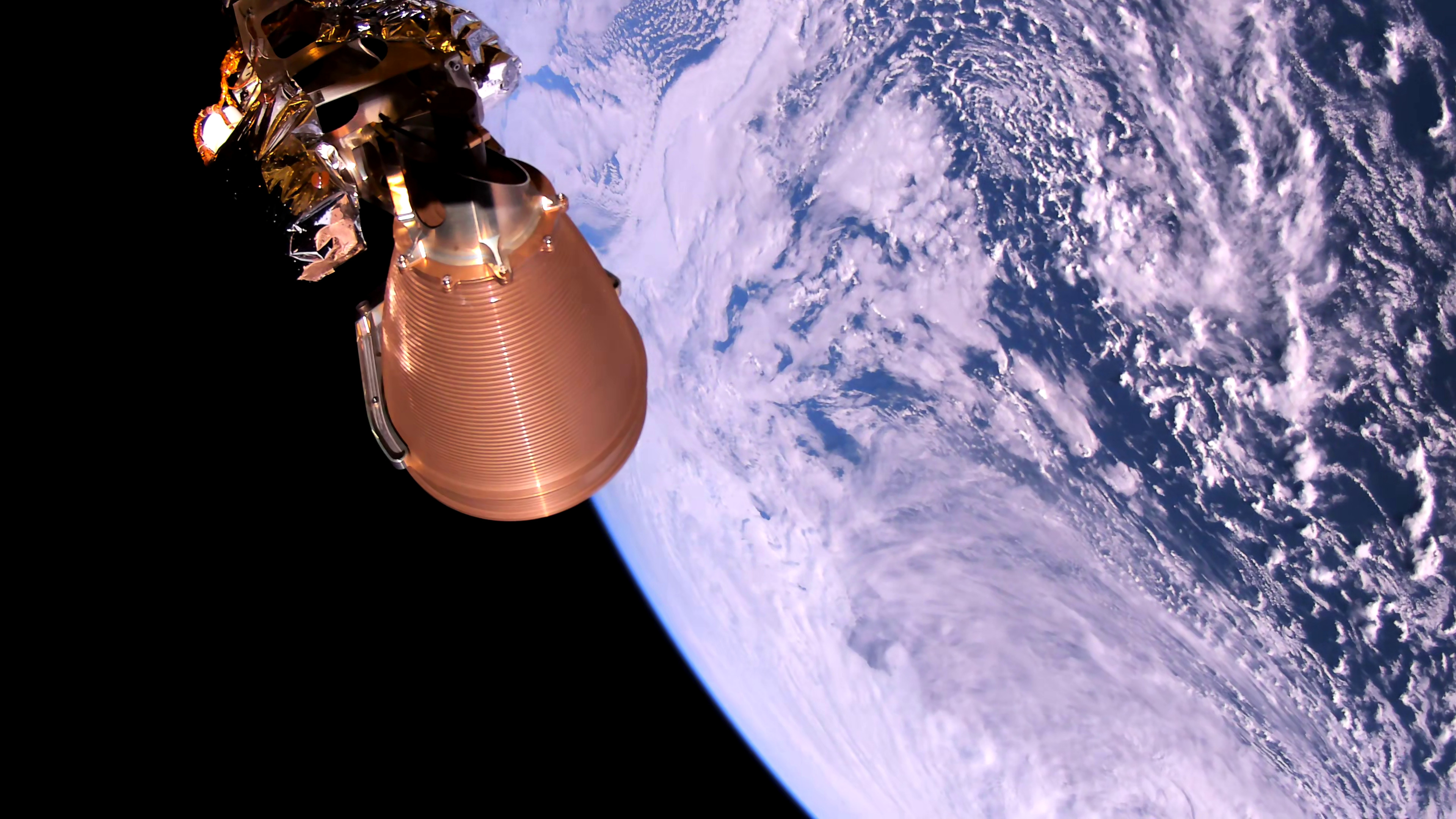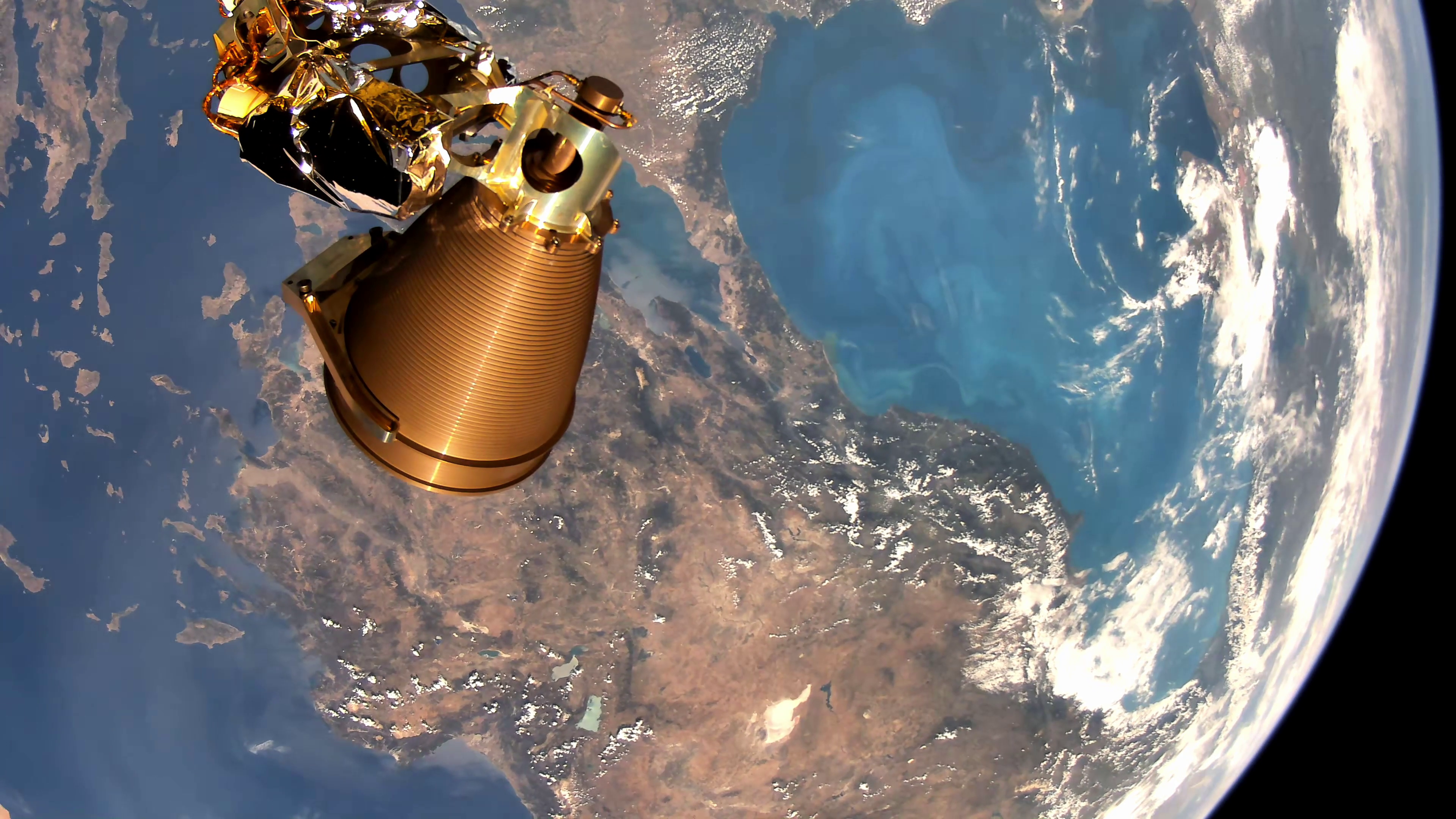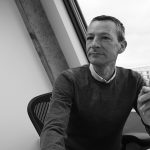Sen was founded in 2014 by Charles Black with a vision to democratise space using video to inform, educate, inspire and benefit all humanity. Its mission is to stream real-time videos from space to billions of people. It plans to capture its unique video content using both hosted video cameras and its own constellations of small satellites.
Spaceoneers spoke with Charles Black, CEO & Founder of Sen at the company’s headquarters at Rocketspace, Islington in London.

How did Sen come about?
I came up with the idea with Sen when I was 18 during my last year of school. I felt from the age of 16 I was an entrepreneur. I wanted to get up every day and use my energies to do something original. I spent a couple of years figuring out what I wanted to do and that’s when the idea came to me. The main idea was to capture news and information about what’s happening in space and to broadcast that to people – to film the Universe essentially. I had the idea about satellites manufacturing other satellites so they could keep filming and broadcasting forever. I wanted to build a business that could be constructive to help society and one that could be so scalable that it could be expanded to the Universe. I was imagining a business that had the best chance of having no boundary in space or time. I called it ‘space TV’. The challenge was ‘how do I go about this?’ This was in 1990 before the days of internet and ‘new space’.
In the short term I did the sensible thing, I went to university, took a law degree and did the bar exams and 12 months pupillage in barristers’ chambers (the barrister version of an apprenticeship). I had a qualification to fall back on in case my ‘hair brained schemes’ (as my Mother called them) didn’t come off. Then once I completed the qualification, I thought I would start the company. I set up a company called ‘Space Internet’ in 1998 – the days of dial-up modems. The original idea then was that I would build websites and put video on them. I started building web sites but no one wanted video in those days, so I started hosting other types of applications such as Microsoft. We launched hosted email in 2001 and then hosted desktop (cloud computing) in 2004. I then changed the name of the business to Nasstar – Network Application Servers – and ‘star’ (nasstar.com) because I had to have space somewhere in the name. I developed this business as a cloud computing company. I managed to get it admitted to the London Stock Exchange in 2005. The idea there was to raise money and to be able to acquire other businesses, to scale through acquisitive growth and organic growth. That kept me busy. By about 2007, the business was going well and we already did our first acquisition but in my heart of hearts I always wanted to stream videos from space for consumers so I started to think about a brand name for the space TV business.
Thinking back to my original dream, I was looking for a brand name and spent a year trying to work out for a global consumer brand, something simple and short. I came up with Sen and bought the domain sen.com in 2008 and registered over the next few years various global trademarks to protect the name Sen. I wanted to do something with sen.com whilst I was still running Nasstar, so I organised for some great space writers to publish daily space news on the site. We published news from 2010. In 2014, after Nasstar completed a large acquisition, I was able to step down as CEO so that I could focus on Sen. It was 24 years after the original idea, but everything was coming together to progress the vision, with an established global infrastructure for distributing videos, billions of smart phones and of course the ‘new space’ revolution was taking off at a real pace. After a research and planning phase I hired our first engineers and we set about designing and developing the core video streaming technology we would need. Earlier this year we successfully demonstrated that technology in orbit.
With a large emergence of satellite constellations, what makes Sen different?
You’re right, there are a number of constellations in the Earth Observation market and I think there’s a place for a large number of operators because there is so much data, so many different types, to capture and analyse to help monitor change on Earth. First of all there are different spatial resolutions, so ground sampling distance from the very high resolution of the likes of Digital Globe and those with a great temporal resolution that Planet does very well. Then there is a mixture of different types of data such as still imagery and more recently demonstrations of SAR constellations. There are others with video, or planning video constellations too. But taking the total of all the current and planned constellations we are addressing gaps that need a solution. What we are focusing on is being video-only company and focusing on the unique attributes of video – movement and storytelling power. We want to focus on real-time video and timely video for events where there are gaps in the market because existing constellations are not focused on rapidly evolving events, for example. They are monitoring events over a longer period of time, which might be for crop health, construction or urban development –where change need to be monitored over longer periods of time. We are not trying to compete with other constellations that are doing great things and gathering very important information either through radar or still imagery. We’re trying to focus where markets don’t cater, for specific events that are unfolding in real-time. If you consider natural disasters such as storms, floods or wildfires, there are on average 350 natural disasters every year which cause a huge loss of life and affect hundreds of millions of people. There really is no data optimised to help people with these events as they unfold. We want to focus our real-time video on these events by streaming it down to people and organisations on the ground so they can respond better to these disasters. We hope therefore we can help to protect lives and improve the outcomes from these disasters.
You recently completed a test demonstration of 4K video from space. What are your plans to develop this?
We recently completed an important technical milestone, which was showing our 4K Ultra High Definition (UHD) video from space. That is the platform we’ve been developing over the last few years. It is fantastic to get that into orbit and see it working. Some of the video highlights can be seen on our YouTube channel https://youtube.com/sen – these are just short highlights from tens of hours of video downlinked so far over the last few months.
The system also has the world’s first steerable robotic space cameras. There are 6 cameras and they can and have all filmed in 4K simultaneously, so I think it’s fair to say the most powerful video system that has ever operated in space. We want to build on that and get even more video cameras into space, both with hosted cameras like the ones launched this year and with our own small satellites.
Another unique attribute of video, as well movement (from which you can derive information on speed and direction such as of a fire, flood or storm) is storytelling power. We are all familiar with watching films or TV shows, and how they can change how you feel or think, and even act. When we look at the longer-term governance of our planet, both the natural world and human world with an ever-growing population and their interaction means the world is changing every single day. If we can bring video of this and stream this to people we think we can help improve and change the outcome of the present and hopefully our future by empowering people with information about our world.
So the vision is to create a new way of seeing our ever-changing world and enable humanity to witness the evolution of our planet as it unfolds. Obviously a key part of what I have mentioned is that video gets to people. We are a people business and see a whole new B2C business-to-consumer market for earth observation data. An analogy I sometimes give to people is GPS, which started off as military use and now has been transformed into a civilian mass adoption location-based service. We think the same for earth observation data. We will create a new form of video streaming media that provides humanity with new perspectives of events on Earth and in space. We don’t even know the sheer amount of data and analytics that can be gathered from the data yet. We want to open up the market and give this data to people with a ‘freemium’ model. When the service launches, you’ll be able to download the app and watch the videos. They will be freely accessible, giving this to millions of people with a smart phone, we think that as a business model that some of the best businesses are free as long as there is a demand for the data.

Many people are inspired by astronauts on the ISS, them looking down from the Cupola. Many describe the ‘Overview Effect’. Do you feel with this 4K video that people can be inspired in a similar way? Is that also a motivator with Sen?
Absolutely. Going back to when I came up with the idea, I was looking at Earth from space in my head, and this overview effect and you think differently. You look down and think there are no borders; look at how much of the planet is water yet much of the planet struggles to have access to clean drinking water. Should we think differently with the way we govern ourselves and look after each other? That overview effect is certainly something when we talk about democratising space. We want to empower people by giving people these unique perspectives and by looking at Earth from space with multiple different spatial resolutions you can see the world and events in context. We hope to inform and inspire people with this overview effect. Hopefully it might enhance how we treat the planet as a result of that. So yes, the Overview Effect is very much what we are trying to do by giving data to the people.
Picking up on the consumer approach, I think that of course people already benefit from space massively through science data that space agencies gather. It all helps improve our understanding of climate change and the changes to the planet. But Sen wants to bring something that is accessible for everyone. We are out there to inform, inspire, educate and ultimately benefit humanity. That ultimately is what space is about and which is reflected in the Outer Space Treaty in 1967 from the United Nations. The Treaty sets out the principles that space cannot be owned by anyone, and should be open and accessible for all nations and all people. We very much align with that vision.
With this Overview Effect, do you think it will help inform politicians to act beyond just data and change perceptions?
Hopefully it will make a difference. Scientists have been studying climate change for decades and all the evidence is there. Most politicians will accept it, apart from maybe one or two. We need to empower people because however much scientific data there is, the best way of communicating is seeing the effects of climate change through nature and where it indiscriminately unleashes itself on a daily basis through storms and natural disasters. I think if people can see those it is a really powerful way, it is telling the story of climate change that is accessible every single day on a smartphone. For climate change to make a difference, obviously politicians are there as lawmakers, they set targets and communicate the importance of doing this but the power and change has to come from the people, from society making changes through things we eat, the way we dress and different attitudes. The best, most powerful way is essentially “Look, here’s Earth live 24/7. Take a look at it yourself.” Sure, it is incredibly beautiful and amazing but it is so fragile and we need to look after it. I only hope that with perception change and the more people who have that overview effect and watch it then hopefully more people will be inspired to look after it better and take action to change the outcome for the better.
Going forward, I think you mentioned your original vision onto Moon and Mars. Are you planning to stream video beyond Earth?
Our desire is definitely to tell our story of space exploration beyond Earth. In fact Sen is an acronym for Space Exploration Network. Ultimately we are a people business and we need to build a business based on what is happening to our planet every day where 7 billion people live. But we know humans are confident to return to the Moon and there are plans through many space agencies and international corporations to go onto Mars. I think what we are going to see is robotic and human exploration on the Moon. These plans can take decades to come about. Our focus is capturing unique video perspectives of Earth with our Earth TV constellation and hosted cameras and then scaling as people and life and economy expand to the Moon. We want to tell the story, and humanity has a right to know it. There’s a peoples’ right to an independent media of our exploration of space.

